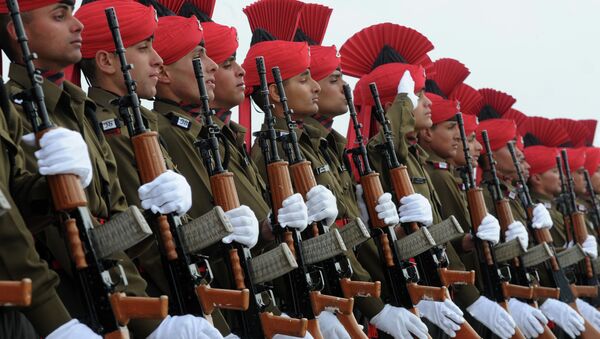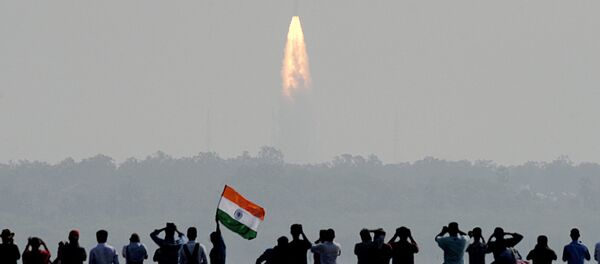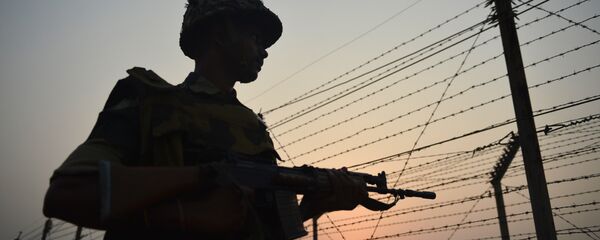The plan being developed by US strategists to involve India in an alleged anti-China alliance does not look very promising, military analyst Vasily Kashin, a senior research fellow with the Institute for Far Eastern Studies at the Russian Academy of Sciences, told Sputnik China.
"Given the current unpredictable course of the Trump administration, strategic investments in a US-Indian alliance seem unreasonable," Kashin surmised, commenting on the "The Sino-Indian Clash and the New Geopolitics of the Indo-Pacific" report by Bharath Gopalaswamy and Robert A. Manning of the Atlantic Council think tank.
The think tank's recommendations include US-Indian joint patrolling of the Indian Ocean as a response to China's growing presence there and expanding New Delhi's cooperation with Washington and Tokyo in military shipbuilding. The report also envisages Australia's involvement in joint naval drills alongside the US and India.
"It is not clear how this step would limit the activity of the Chinese fleet in the region," Kashin says. "It is most likely that in response China would seek to increase its military presence there [the Indian Ocean]. Similarly, it is clear that the joint Indian-American patrolling would only aggravate tensions in relations between India and the People's Republic of China (PRC)."
According to Kashin, "this is a very strange statement." He drew attention to the fact that "China, unlike India, independently produces aviation and all type of equipment for aircraft carriers." Currently, Beijing is building two large aircraft carriers, one of which will be equipped with an electromagnetic catapult, in addition to the modernized Soviet aircraft carrier Varyag.
"Given [China's] substantial financial resources and the comparatively stronger industrial base [Beijing] would easily outpace India in case of an 'aircraft carrier race,'" Kashin pointed out.

Additionally, the think tank analysts insist that India should increase its capabilities in space exploration in partnership with the US. According to Kashin, this recommendation raises the question as to what extent Washington is ready to share intelligence technologies with New Delhi. "Earlier, the Americans did not demonstrate such a generosity in this field, even while cooperating with old allies," he noted, warning that without the transfer of technologies the US aid may turn into a "dangerous dependence" for India.
"It is doubtful that South Asian nations will agree to do this," the Russian military analyst noted. "They see a lot of opportunities in the Sino-Indian rivalry, including that of attracting investments. [Meanwhile], Bangladesh and Sri Lanka have turned into large buyers of Chinese arms."
According to the think tank, Kashin continued, New Delhi should propose "regular India-US-China talks at least on an annual basis, perhaps on the margins of the G-20 or East Asian Summit meetings." He threw the offer into doubt, stressing that it is not clear whether India really needs to involve Washington in its relationship with China, thus limiting its own independence. On the other hand, it is unlikely that Beijing would accept such a format given the fact that it has always been inclined to solve regional disputes on a bilateral basis.
Given all of the above, the Russian analyst expressed skepticism that the strategy promoted by the Atlantic Council analysts will actually work.
"Perhaps, as a result, India will receive additional trump cards in the negotiations with China as well as an expanded access to US military technologies that will allow [New Delhi] to boost its positions and obtain some tactical advantages," Kashin assumed.
Drawing parallels between the Sikkim border issue and China's alleged "assertiveness" in the East and South China Seas, the report claims that "China appears to be attempting to change the status quo either by force or by assertiveness backed by force, all aimed at creating new facts on the ground."
According to the authors of the analysis, Washington may capitalize on the ongoing Asian dynamic by forging "stronger ties with India" and "thread[ing] in other Indo-Pacific states in ways that counterbalance Chinese influence while bolstering Indian interests."







